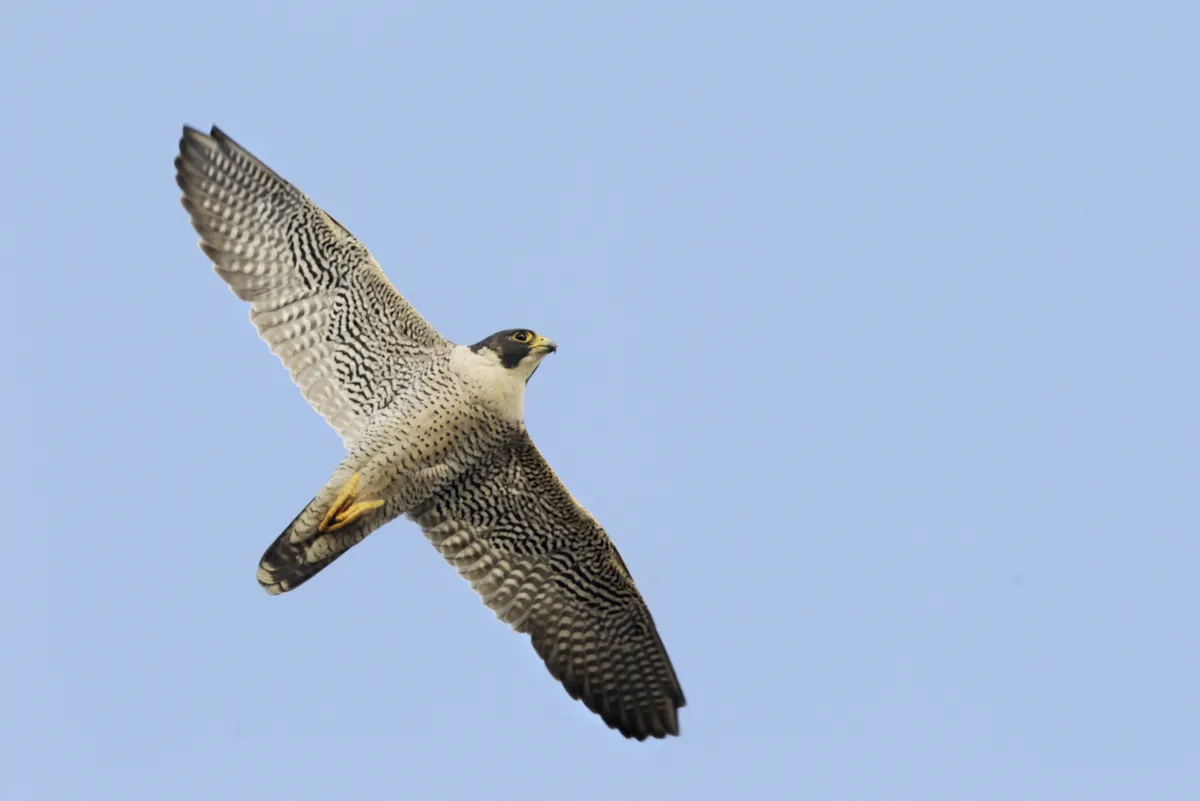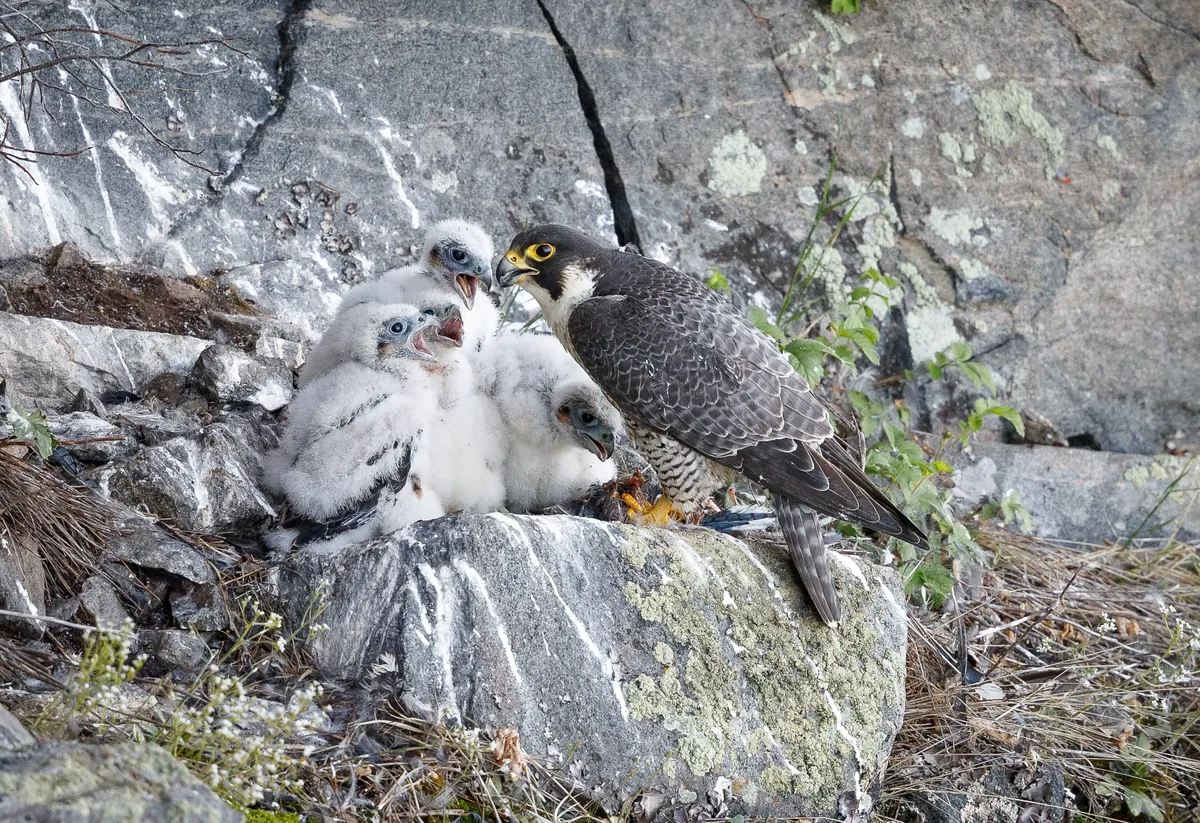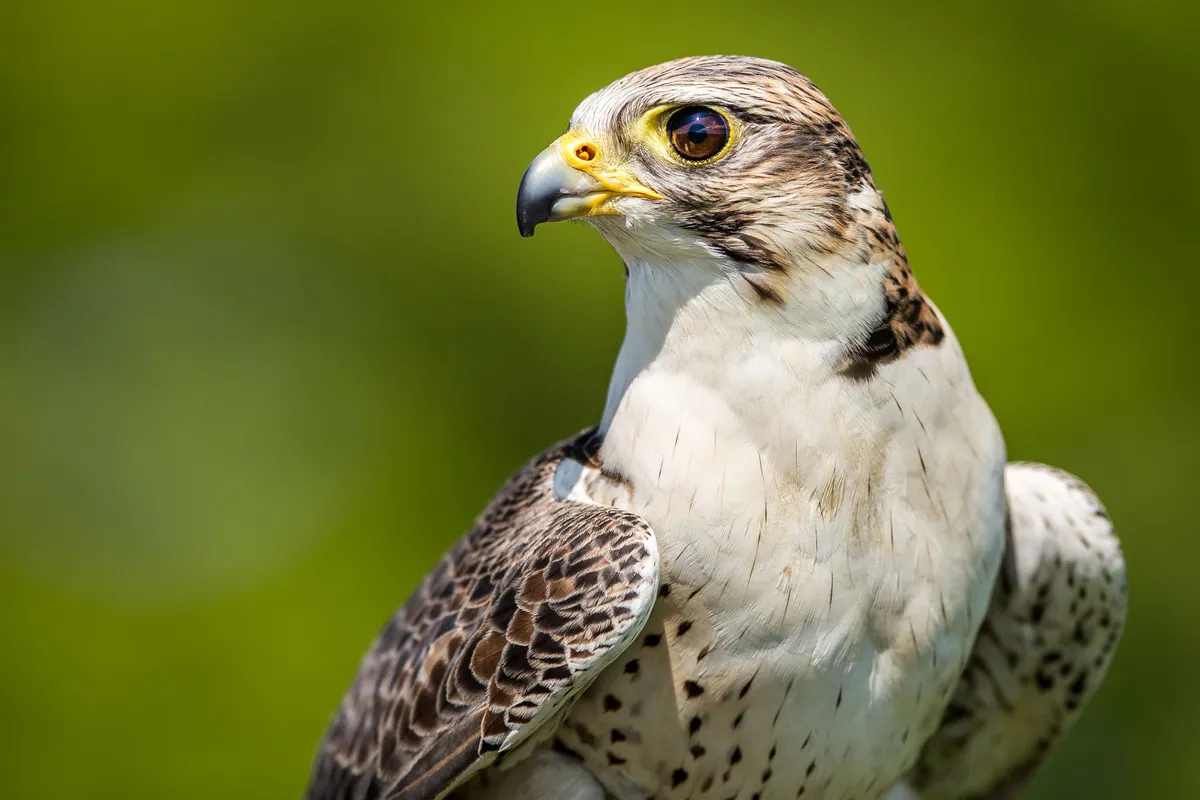Peregrine falcons are large, powerful hunters, renowned for their high-speed flying and diving. In fact, they are the fastest animal in the world.
Find out more about this incredible bird of prey, including how fast it can fly, what it eats, where and when to see it, and how big it is, with our guide to peregrine falcons.
How fast is a peregrine falcon?
The top speed of a peregrine falcon is over 200 miles (320km) per hour during a hunting dive.
Wings are tucked in when the peregrine falcon pursues its prey and dives, as is shown in this footage from BBC Studios.
How big are peregrine falcons?
The size of a peregrine falcons ranges from between 14 and 19 inches in length, with a wingspan range of between 3.3 and 3.6 feet.

How to identify a peregrine falcon
The top of a peregrine falcon is blue-grey, with a darker head, a white face and a black 'moustache'. Its white chest is peppered with black spots. It has large, pointed wings and a fairly short tail.
Their call is a repeated, fairly high-pitched 'ka, ka, ka'.
Where and when can you see peregrine falcons?
Peregrine falcons are among the world's most common birds of prey, living on all continents except Antarctica. They are usually found in wide-open spaces, particularly near coasts. They're also known to nest in cities, and there are currently 30 breeding pairs in London according to the Wildlife Trust – the second-largest urban population of peregrine falcons after New York.
They are travelling birds, so much so that they are named accordingly. The word 'peregrine' comes from the archaic term for 'foreign' or 'wanderer'. Although they travel widely, their strong homing instinct means they nearly always return to their favoured lands.
In the UK, you can see peregrine falcons in the highlands of the north and west, as well as rocky coasts throughout the year. They typically nest on high cliffs.

What do peregrine falcons eat?
They predominantly eat other birds, particularly those of a medium build, such as pigeons and small ducks.
What is the life expectancy of a peregrine falcon?
Peregrine falcons are expected to live up to 17 years in the wild.

How many peregrine falcons are there in the UK?
Peregrines were hunted heavily and impacted by pesticides in the food chain during the 20th century. Thanks to improved legislation and protection of these birds, they are now more present across the UK. They are a Schedule 1 listed species of The Wildlife and Countryside Act.
There is estimated to be around 1,500 pairs of peregrine falcons in the UK.
What are males and females called?
A male peregrine falcon is called a 'tiercel', while females are simply referred to as 'falcons'.


